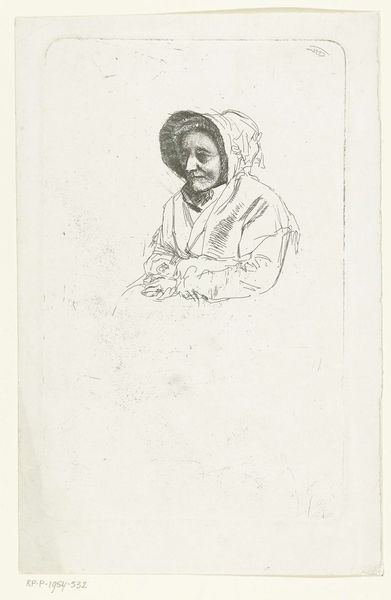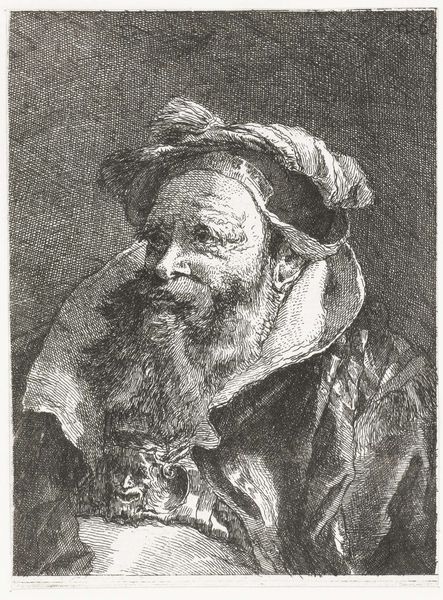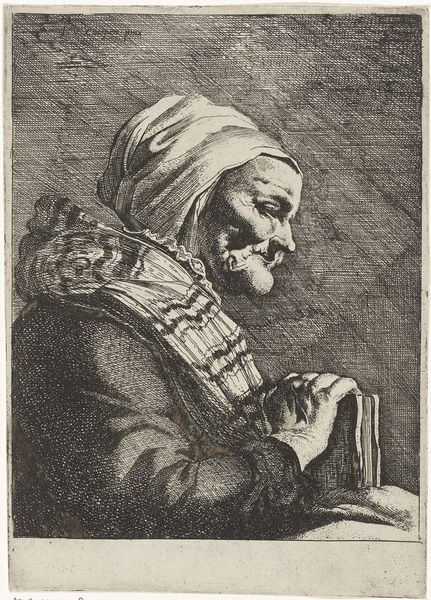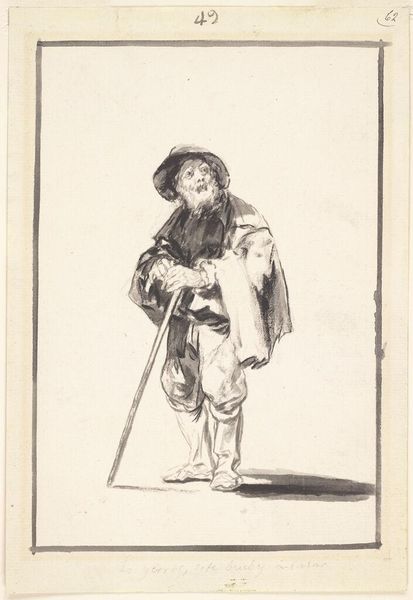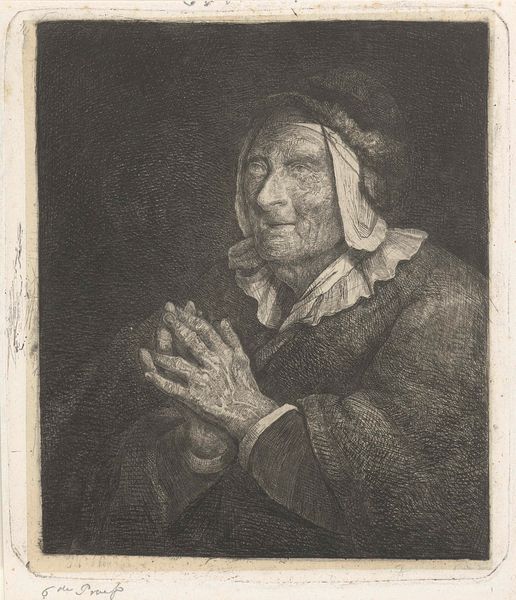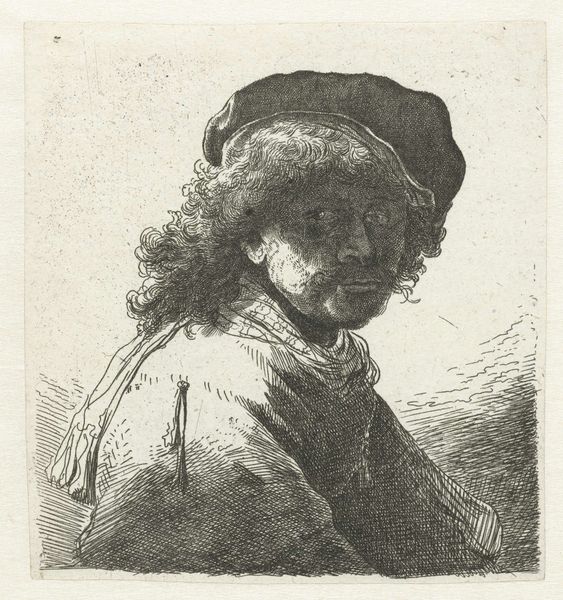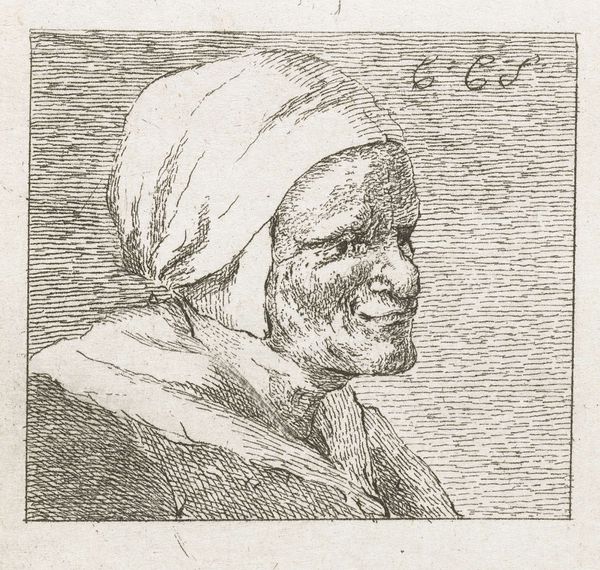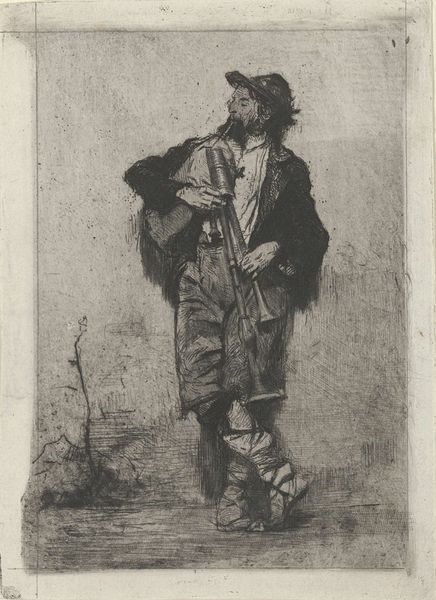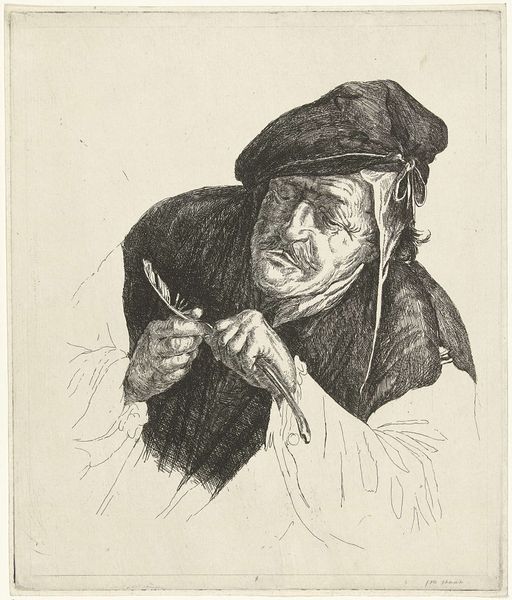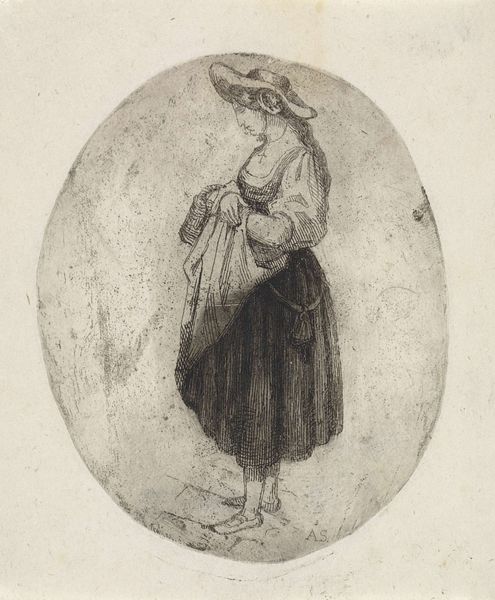
engraving
#
portrait
#
baroque
#
genre-painting
#
engraving
Dimensions: height 210 mm, width 160 mm
Copyright: Rijks Museum: Open Domain
Curator: The piece before us, titled "Nar," was created between 1705 and 1751 by Carel Isaak de Moor. It's an engraving, giving it a wonderful sense of detailed texture. What’s your initial take on this character? Editor: It's like looking at a paused thought. He’s got this little smirk playing on his lips, a twinkle in his eye. I’m instantly wondering what kind of story bubbles beneath the surface. There’s definitely a playful ambiguity. Curator: Indeed! The image draws heavily from the Baroque style, showcasing a genre-painting sensibility. I’m drawn to the cap on his head. To me it's more than just headgear; it's like a crown for his quirky character. Does the image read in a cultural-historical kind of way to you? Editor: Absolutely, you have to wonder what kind of cap this really is: perhaps that of a buffoon or jester? Think of the commedia dell’arte characters and the deeply ambivalent role of the fool, or trickster, within a rigid society. Their silliness carries an incredible amount of authority—not despite the mockery, but through it. Curator: That’s astute. It’s as if the clothing—and perhaps social standing, in his particular age—is an intentional disarming device. Allowing him an unfiltered view, and voice, on the world. The hand on the chin and the upward gaze are common in portraiture but, as you say, somehow suggest that active mind that makes it special here. I can almost see his thoughts swirling. Editor: Yes, it invites us into a space of speculation. Think about it this way: engravings allow for reproductions, to allow circulation of images to wider audience. De Moor doesn’t seem interested in presenting a lord or a king, but something else that can be consumed in the cultural landscape. This fellow, “Nar”, is of and *for* his society—asking more questions, I think, than offering any firm answers. Curator: What a thought. He serves as both mirror and mystery! Ultimately I am left to wonder the purpose for which such portraits were originally reproduced, consumed, and considered by his audience. Editor: Precisely, his charm makes him strangely timeless. You feel this piece can hold many things simultaneously.
Comments
No comments
Be the first to comment and join the conversation on the ultimate creative platform.
